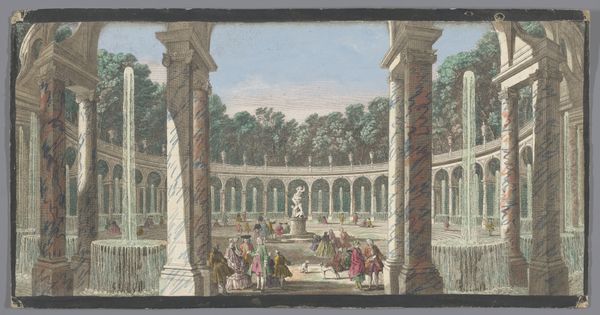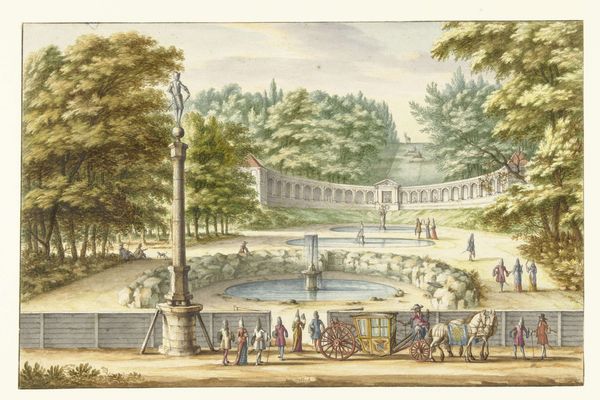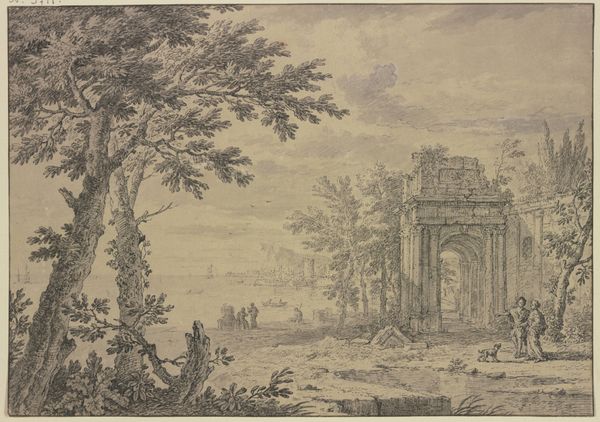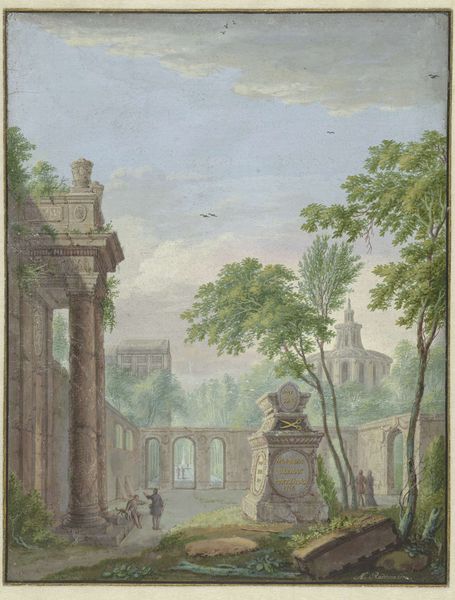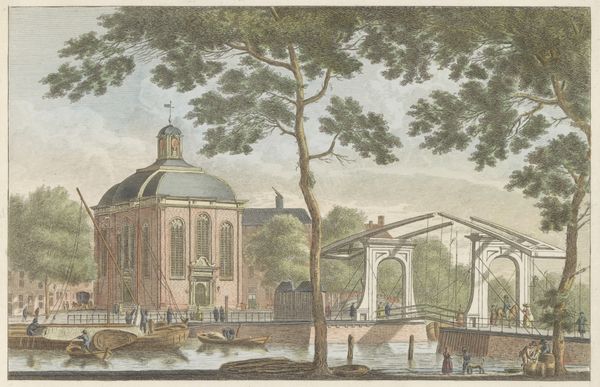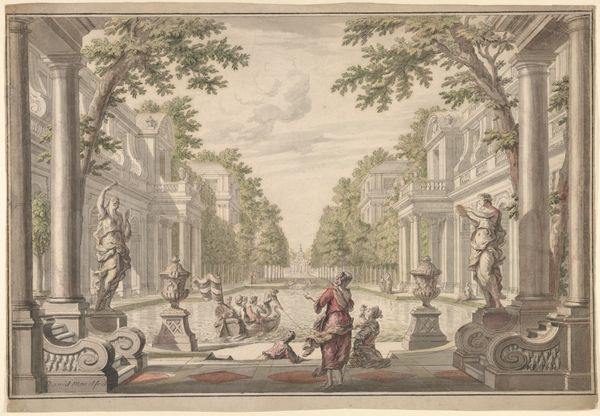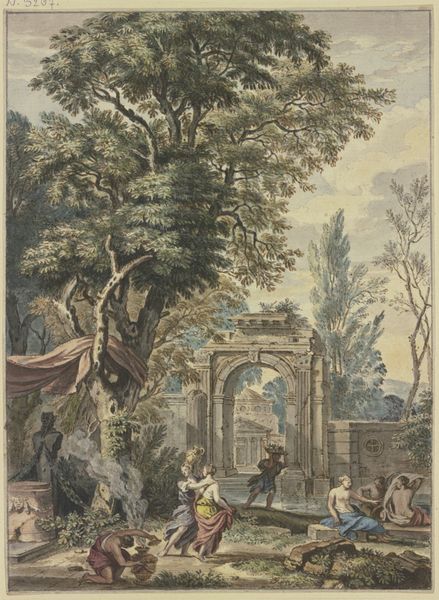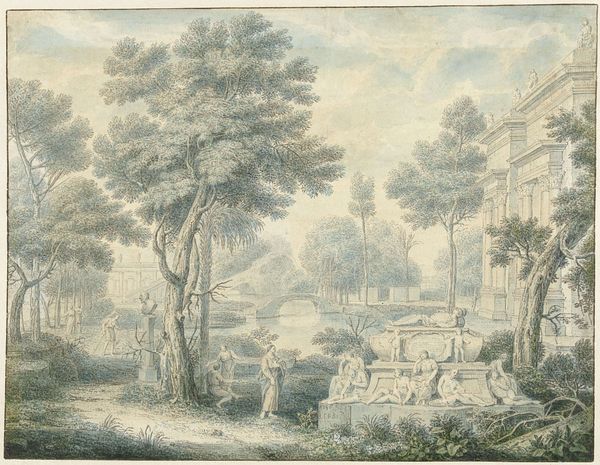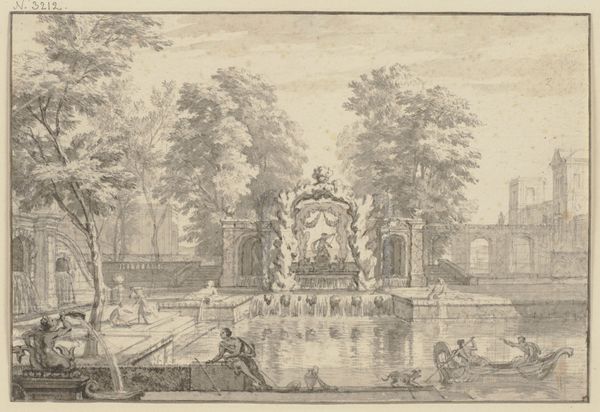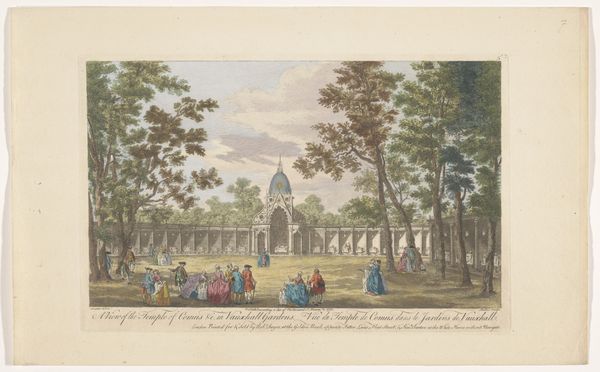
drawing, painting, fresco, watercolor, architecture
#
drawing
#
architectural landscape
#
baroque
#
painting
#
landscape
#
perspective
#
fresco
#
traditional architecture
#
watercolor
#
classicism
#
architectural drawing
#
architecture drawing
#
cityscape
#
genre-painting
#
watercolor
#
architecture
Dimensions: height 228 mm, width 341 mm
Copyright: Rijks Museum: Open Domain
Curator: Looking at this watercolor and pen drawing by Isaac de Moucheron from around 1725, titled "View of the Garden of Villa d’Este in Tivoli," I'm immediately struck by how vividly it evokes the essence of a formal garden. Editor: It's serene, almost dreamlike, with that soft wash of color and intricate linework. A perfect distillation of leisure, privilege and a human need to arrange the natural world. Curator: Precisely. The artist masterfully uses perspective, doesn't he? To compress the elaborate terraced landscape into a single, comprehensible plane. There’s an echo of idealized classicism here, but imbued with a fresh sensibility. What do you make of the figures? Editor: They intrigue me, suggesting social structures inherent in landscapes of leisure. Note how they are positioned; the social performance amidst this orchestrated paradise. The drawing also feels subtly subversive for its time— it shows the undercurrents of societal norms through composition. Who benefits, who labors? The garden reflects this unspoken dynamic. Curator: An important perspective. The Villa d’Este itself has long been an emblem of power, both papal and artistic. The garden and the dramatic waterworks have captivated the collective imagination. They operate like archetypes, reminding us how nature has always been culturally interpreted, reshaped, and, I agree, politically charged. We're confronted with a cultural dialogue spanning centuries. Editor: These artificial structures are themselves a visual signifier of social capital and control. Looking closely, there's the contrast with untamed elements—the wilder foliage and unbridled energy of the fountains—it is an assertion, perhaps, of humans’ uneasy partnership with nature. Moucheron’s drawing serves as an archive for understanding the intricate relationships between art, power, and place. Curator: And so this "view" of a garden actually reveals a landscape far more layered and profound than initially meets the eye. Thank you. Editor: Indeed, it pushes us to examine how what we cultivate reflects what we value as a society. My pleasure.
Comments
rijksmuseum about 2 years ago
⋮
Isaac de Moucheron often painted and drew Italian landscapes with monumental classical buildings or ruins. These would generally be more or less symmetrical in construction. He also built up a considerable clientele as a painter of wall hangings. Although De Moucheron lived in Italy from 1694 to 1697, he may have based this later drawing on an engraving of the famous garden by another artist.
Join the conversation
Join millions of artists and users on Artera today and experience the ultimate creative platform.
